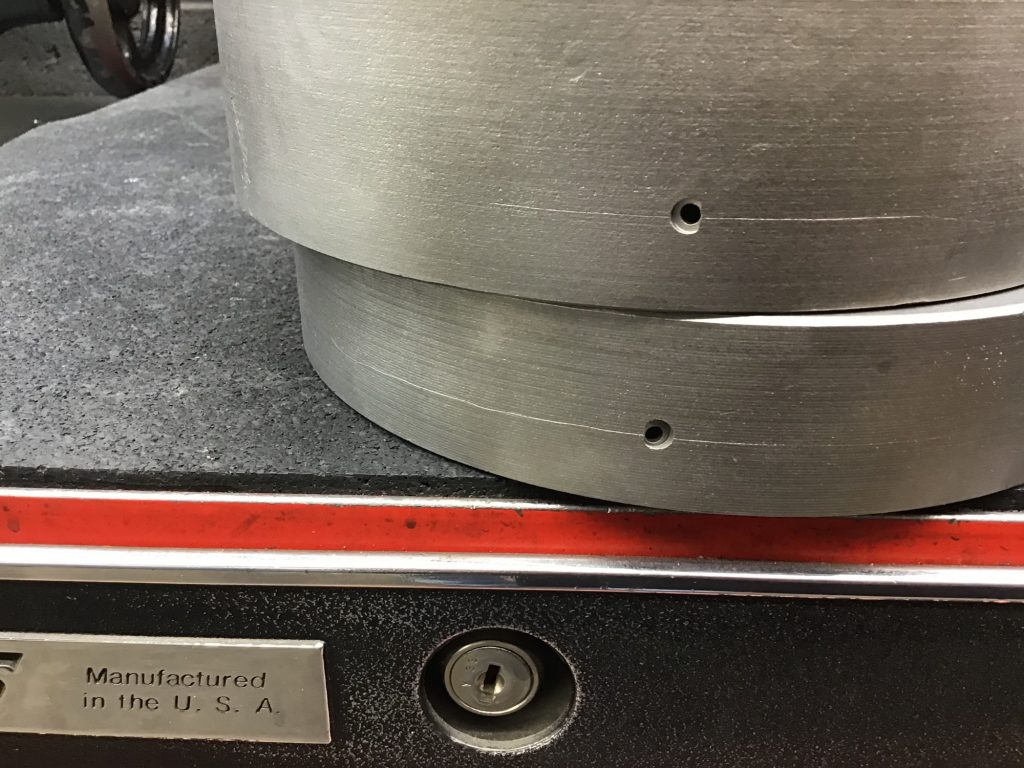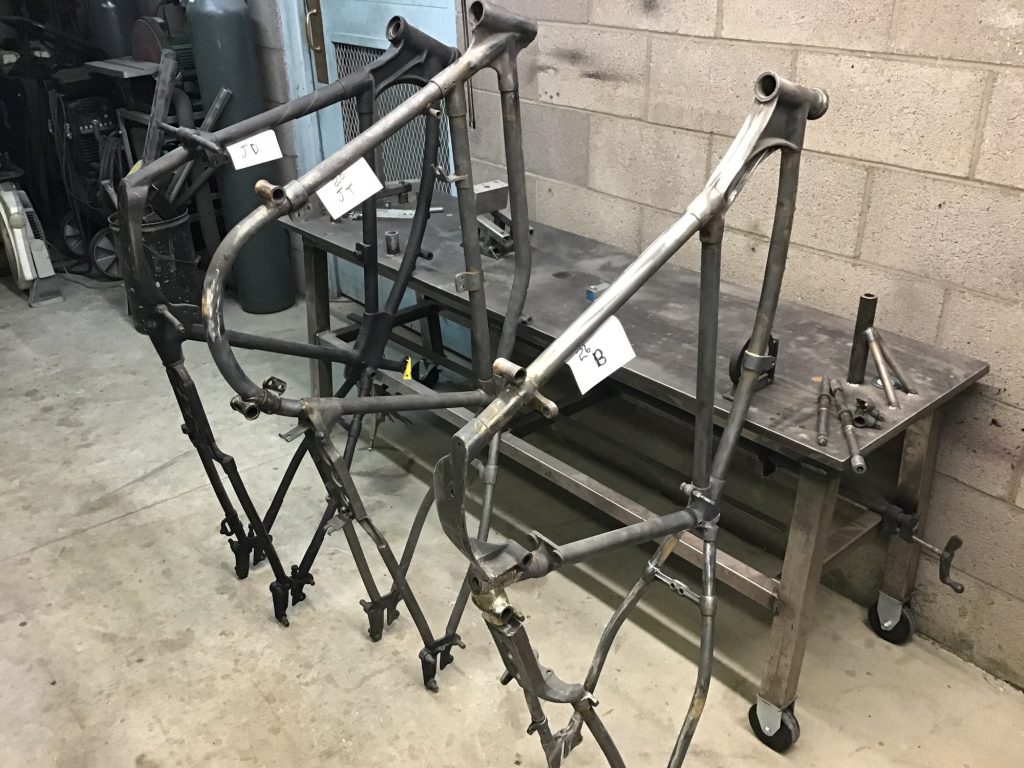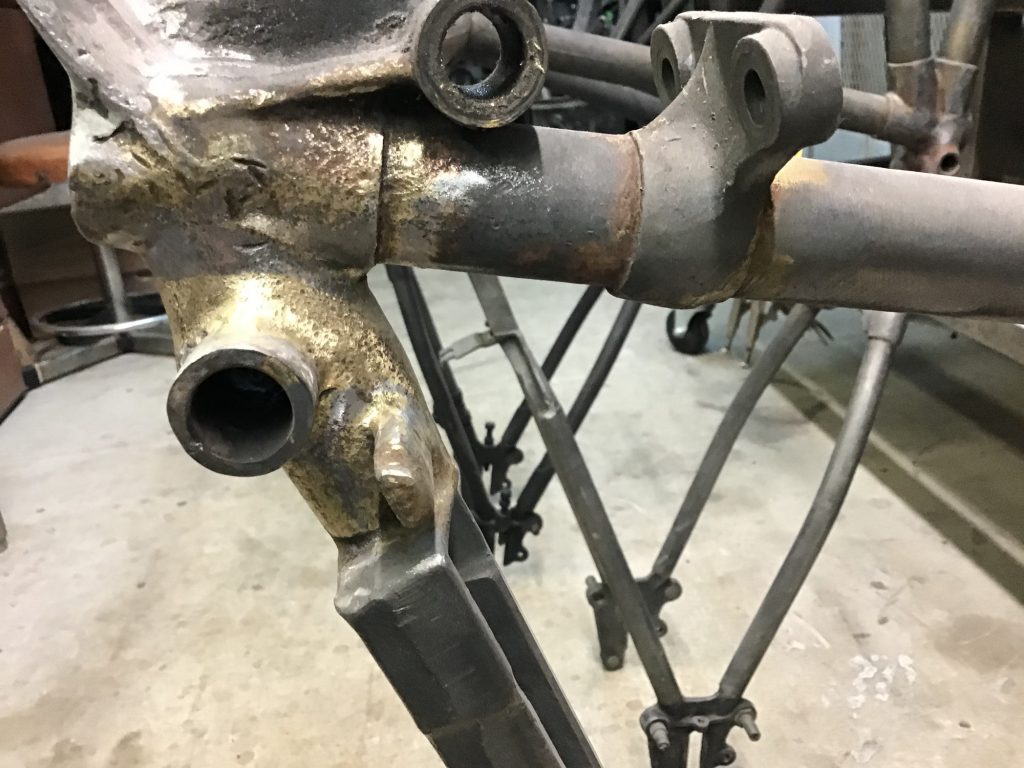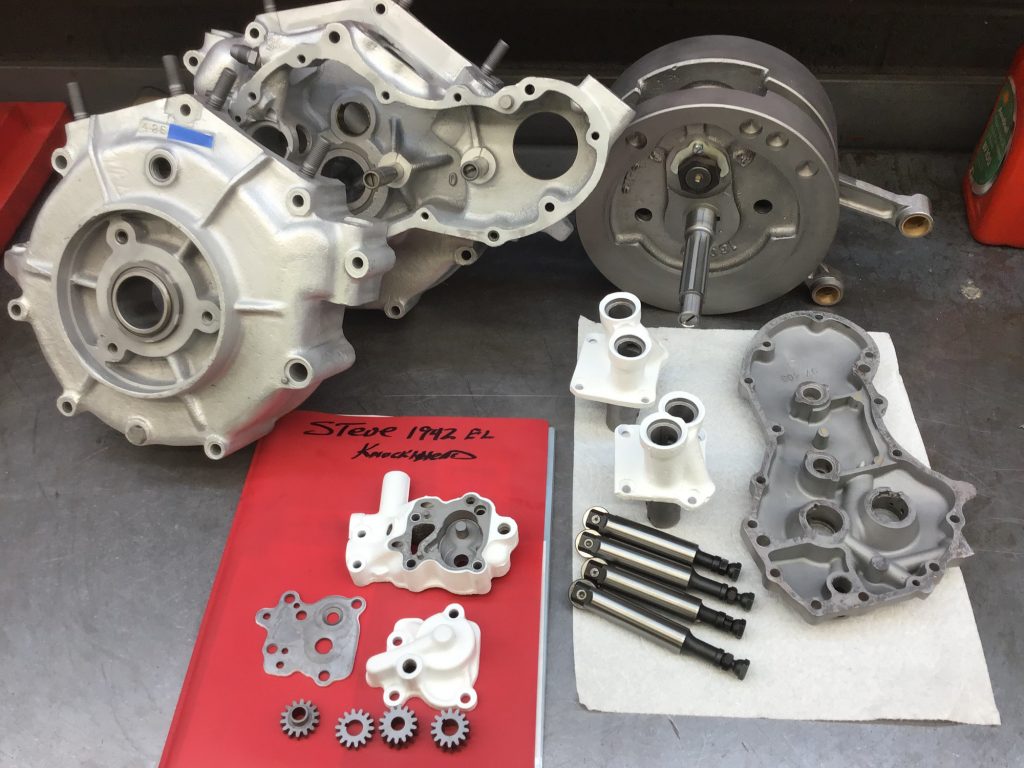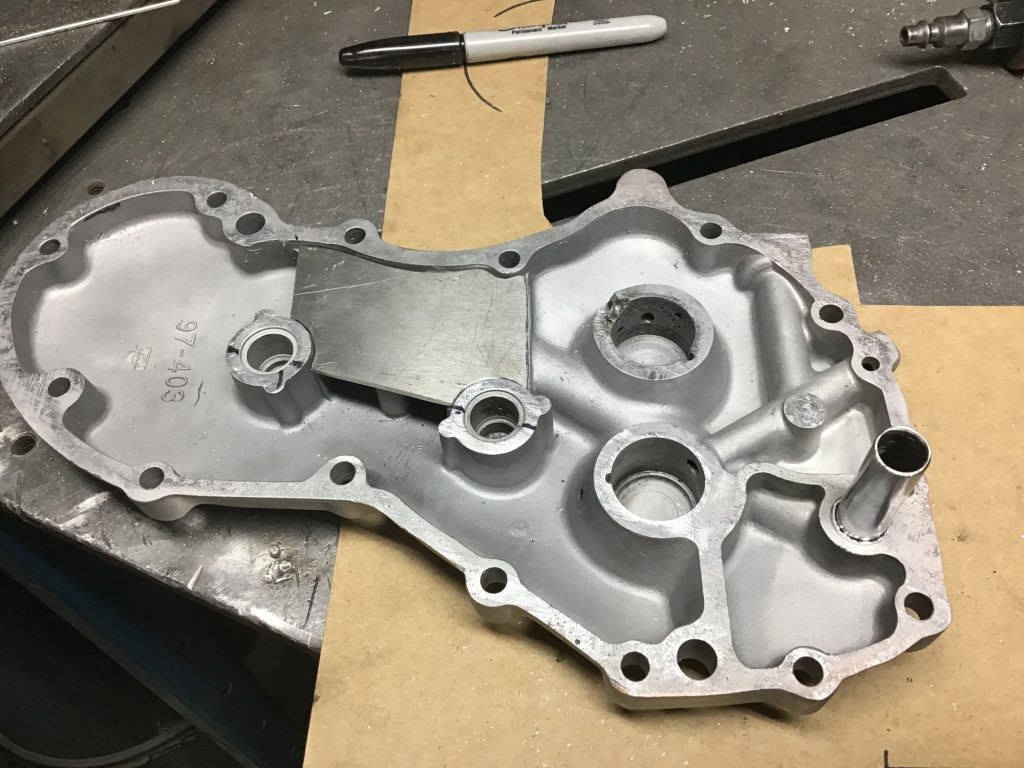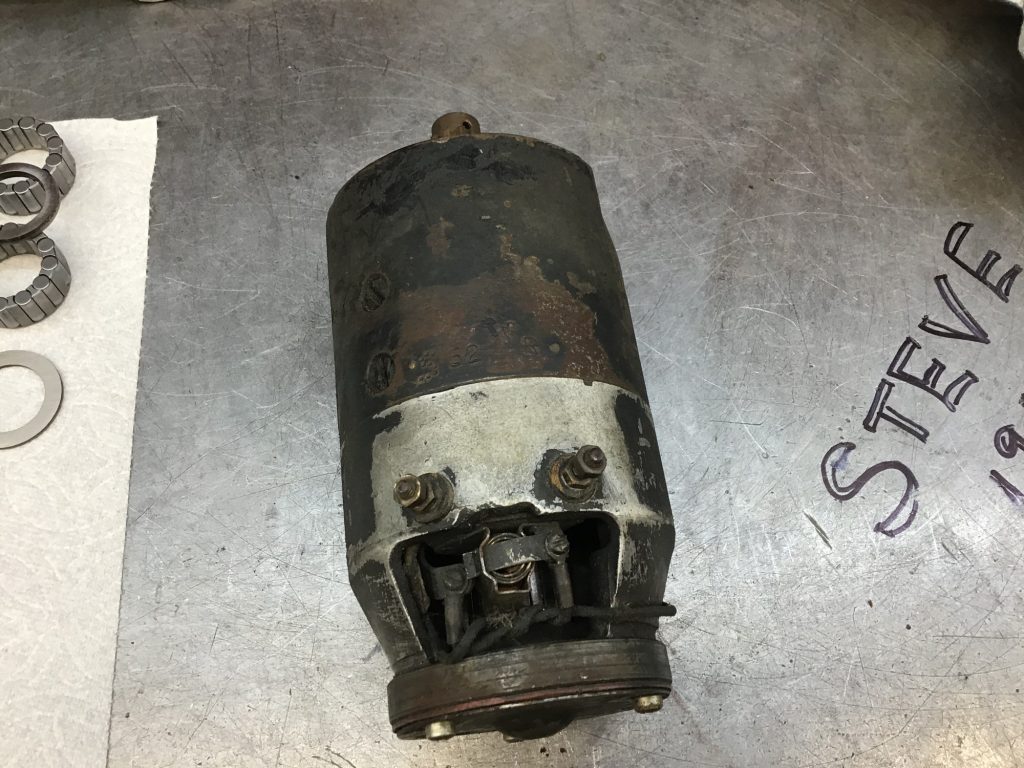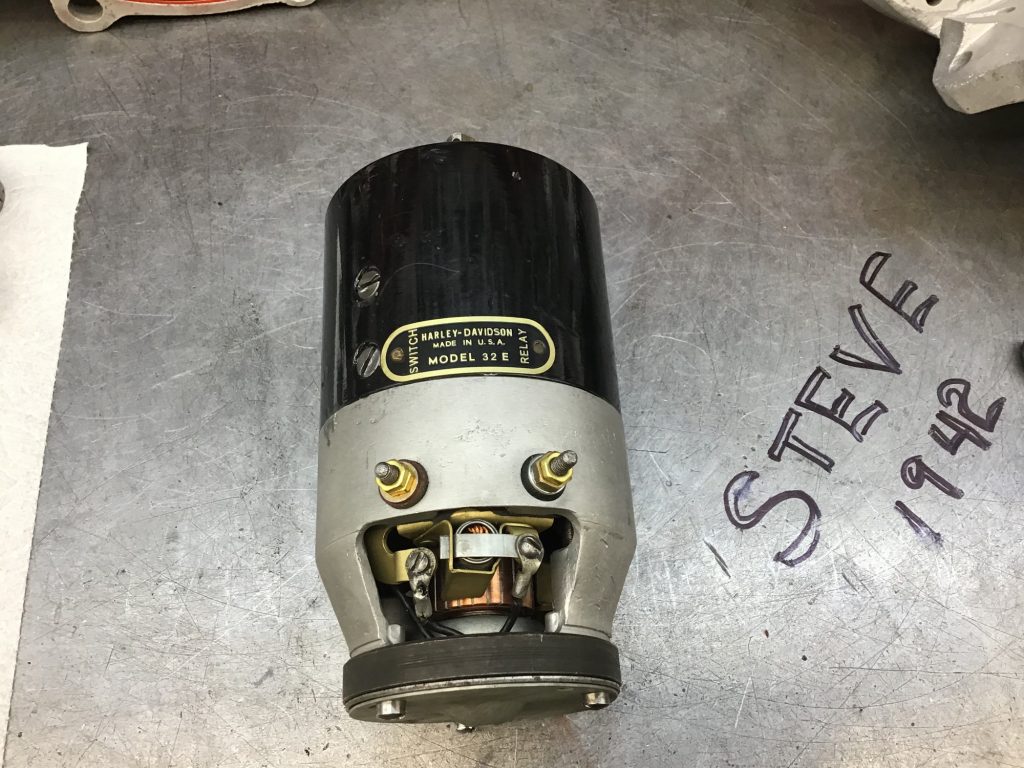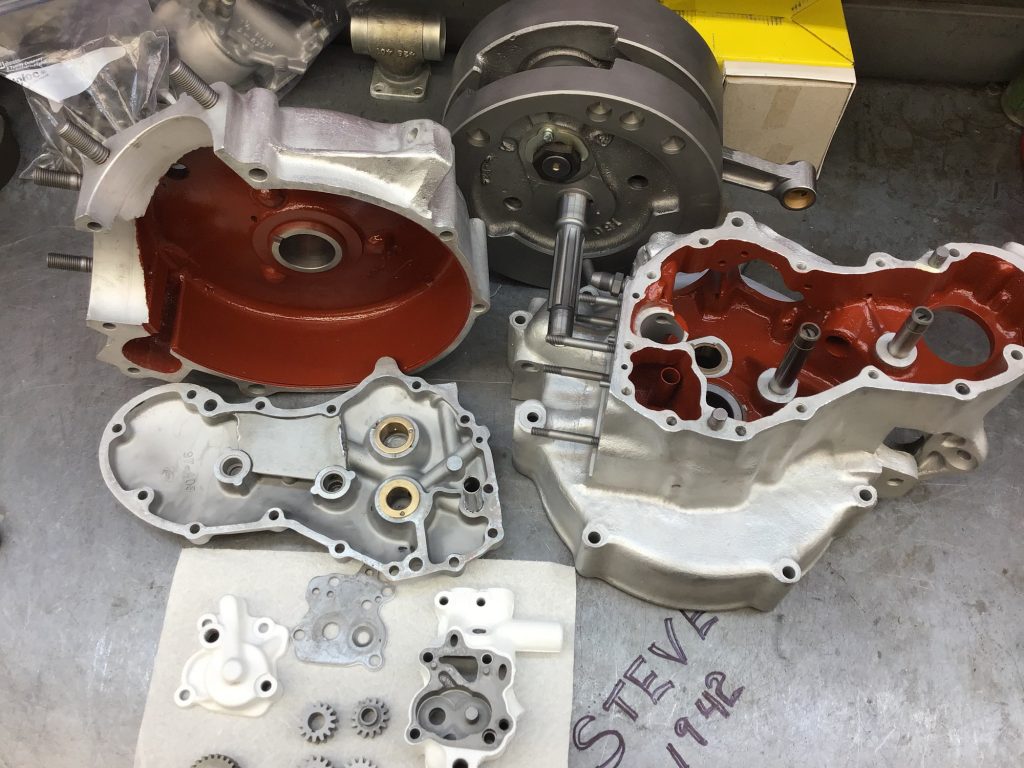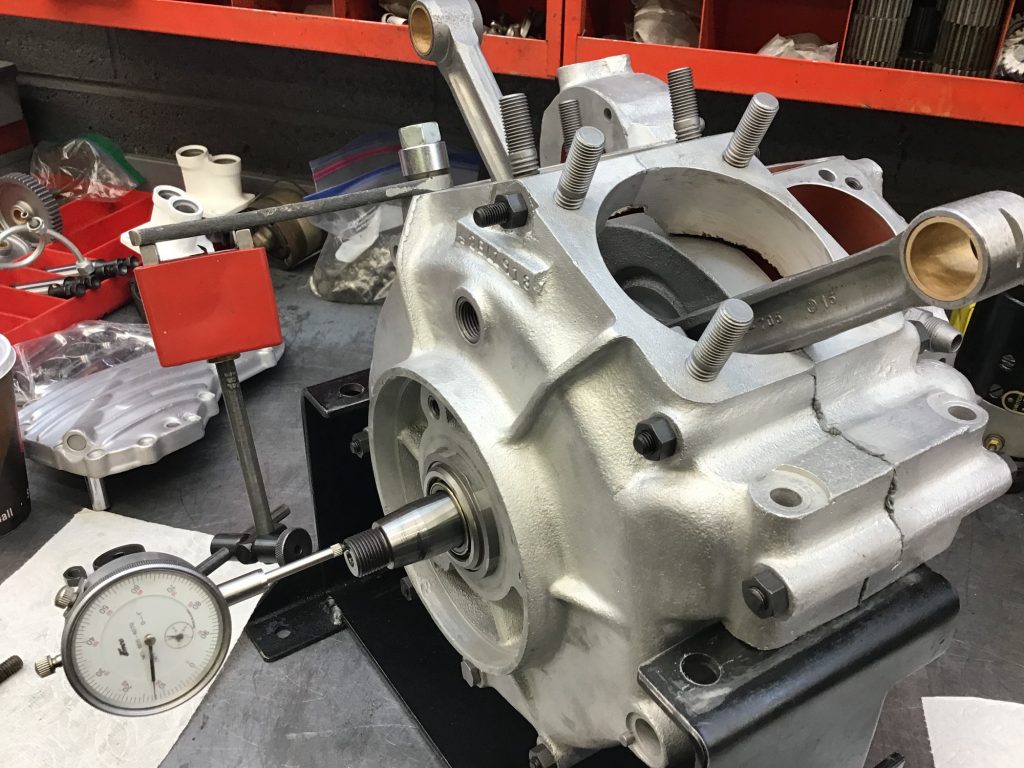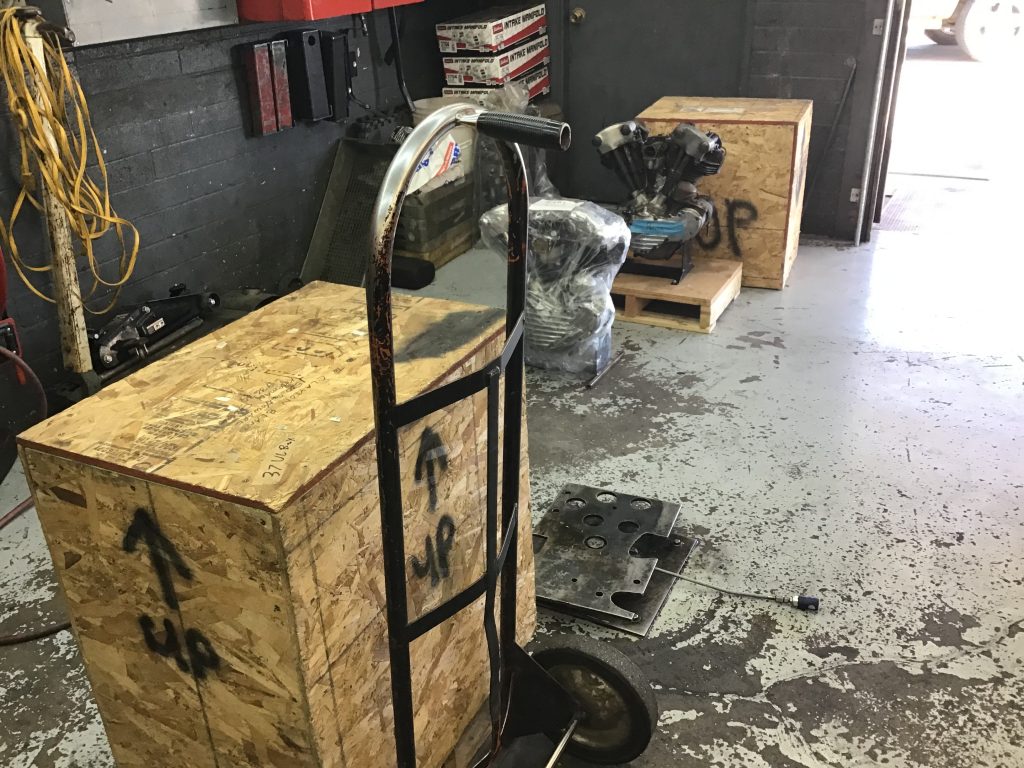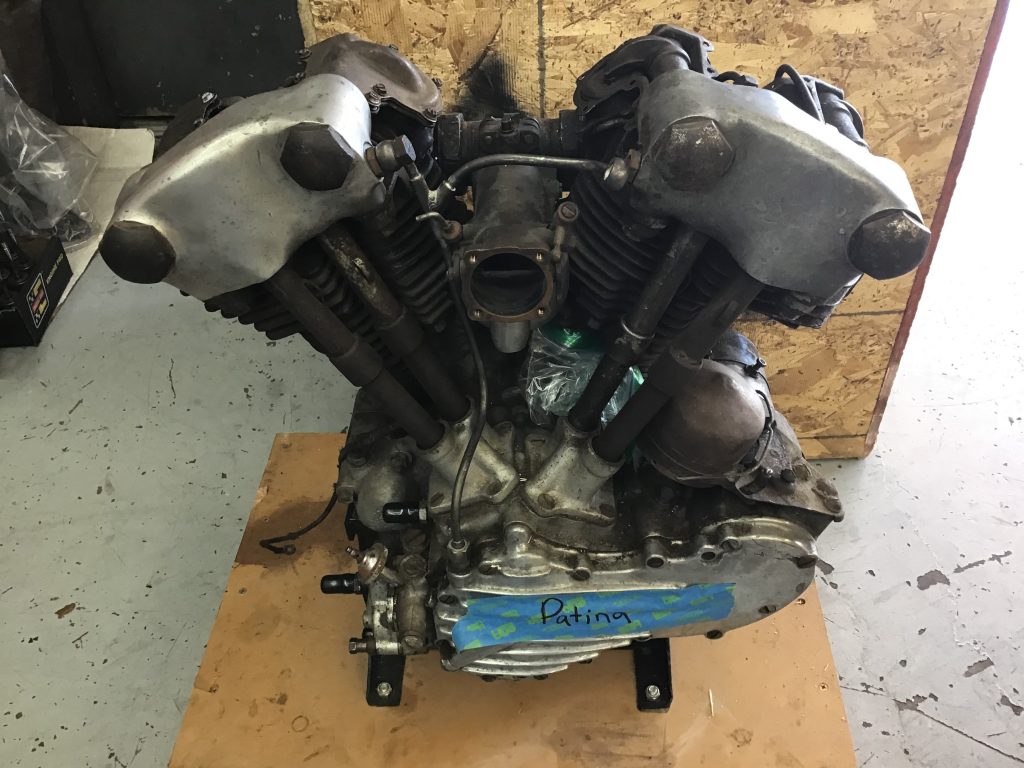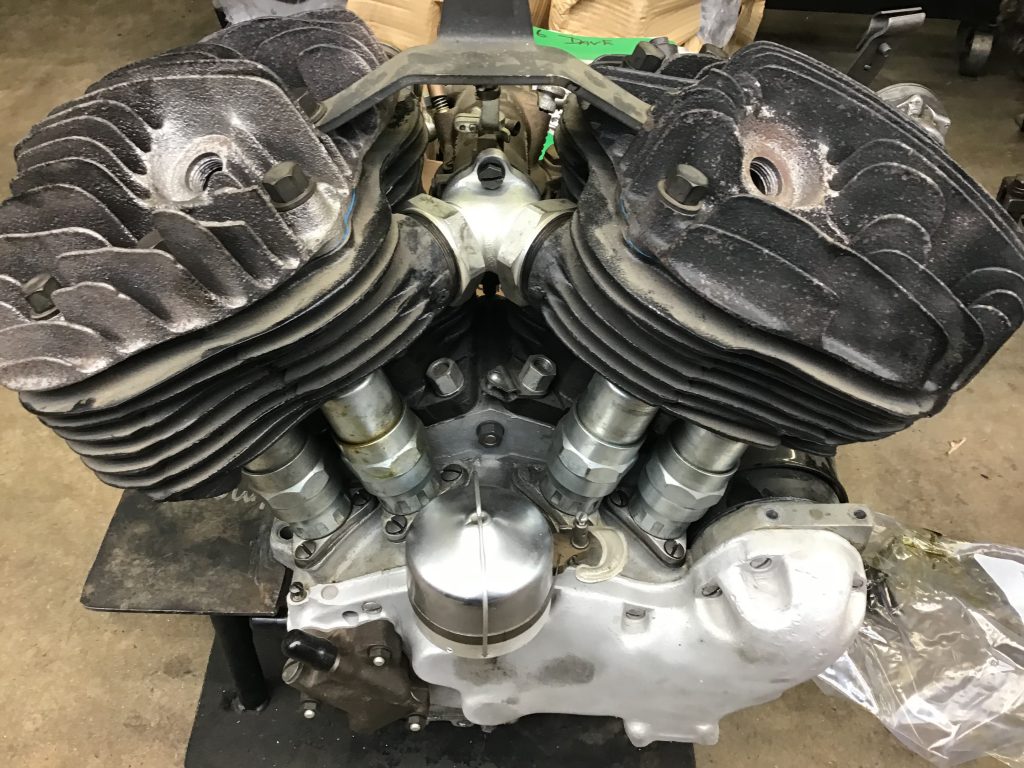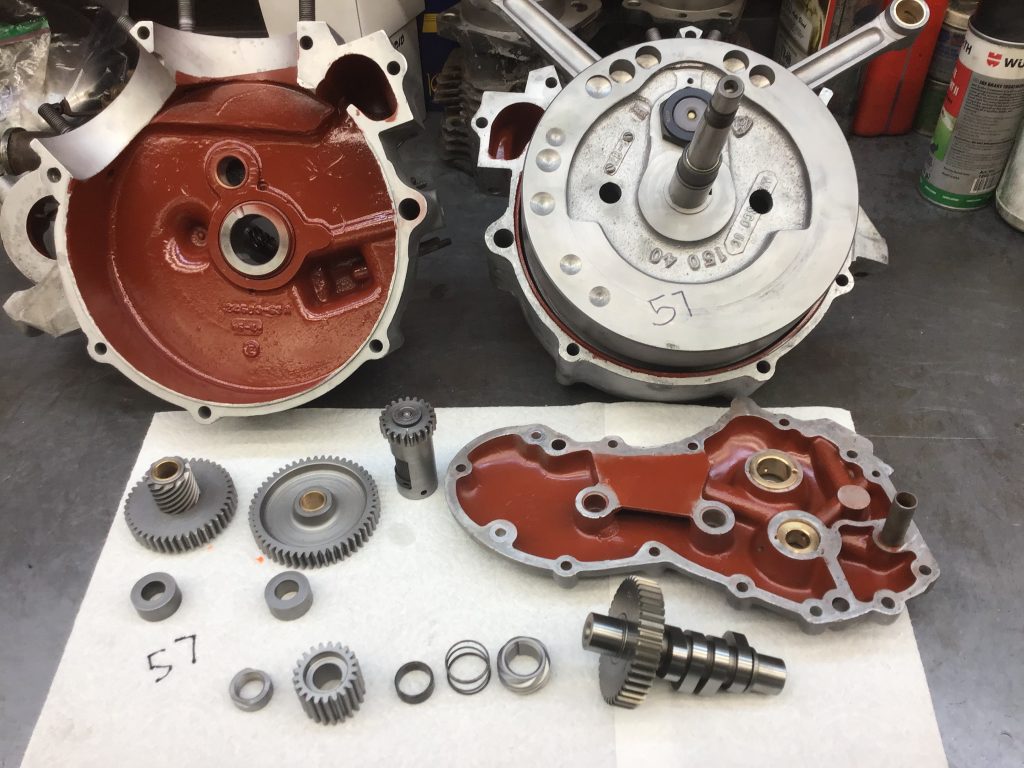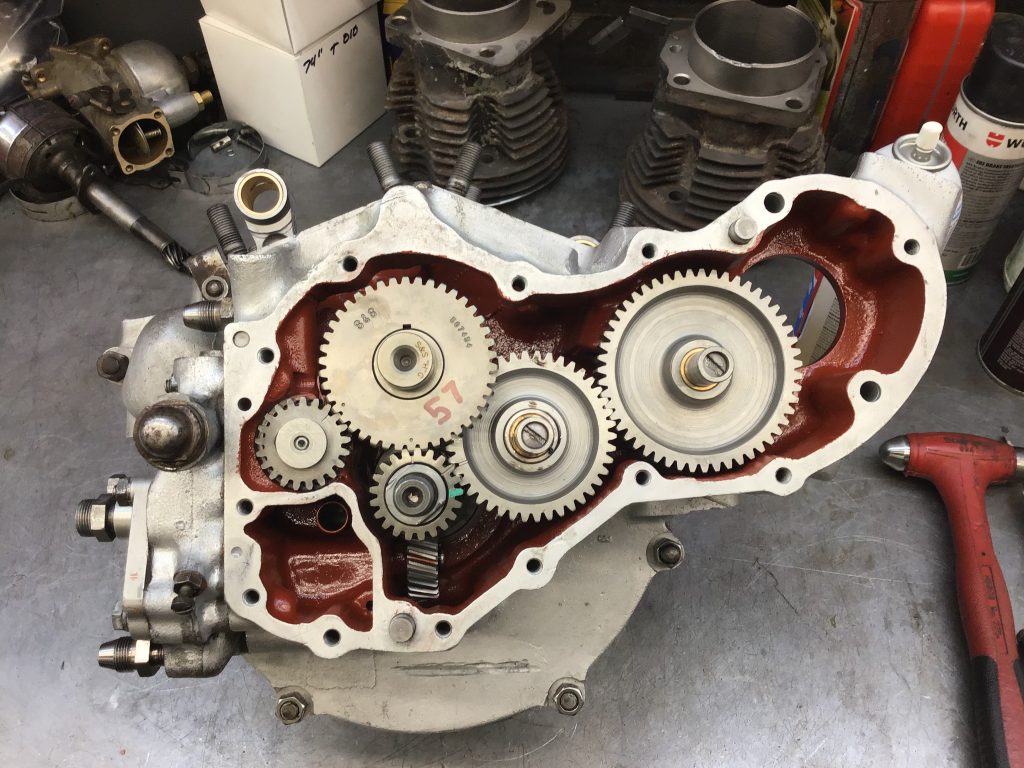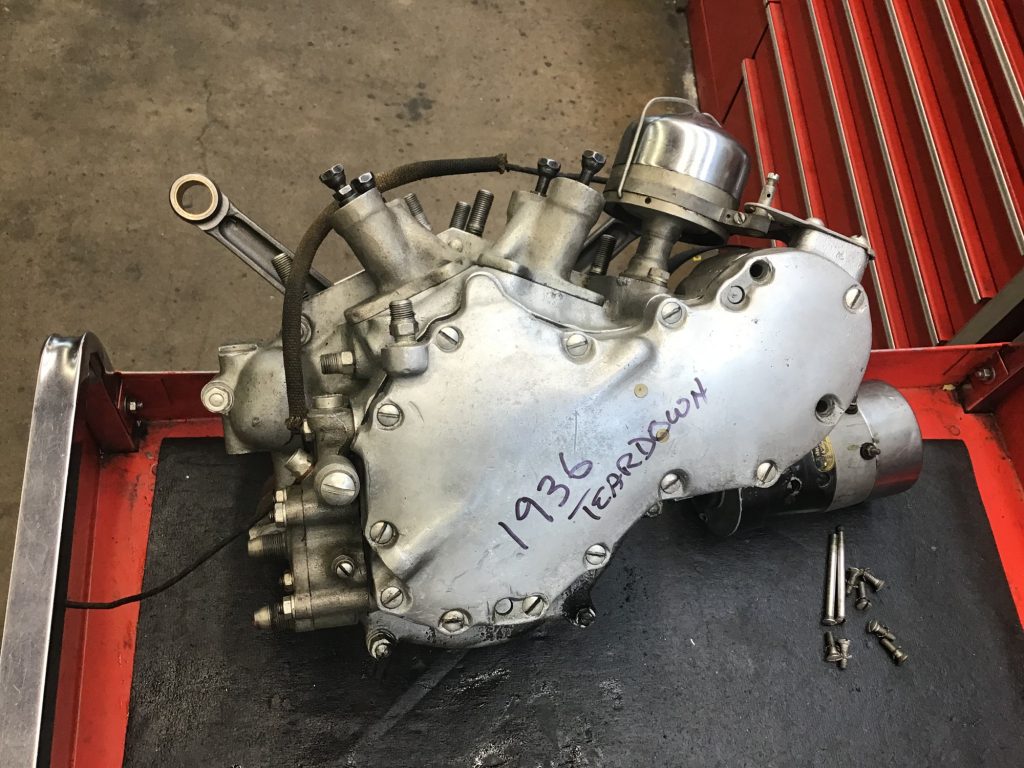
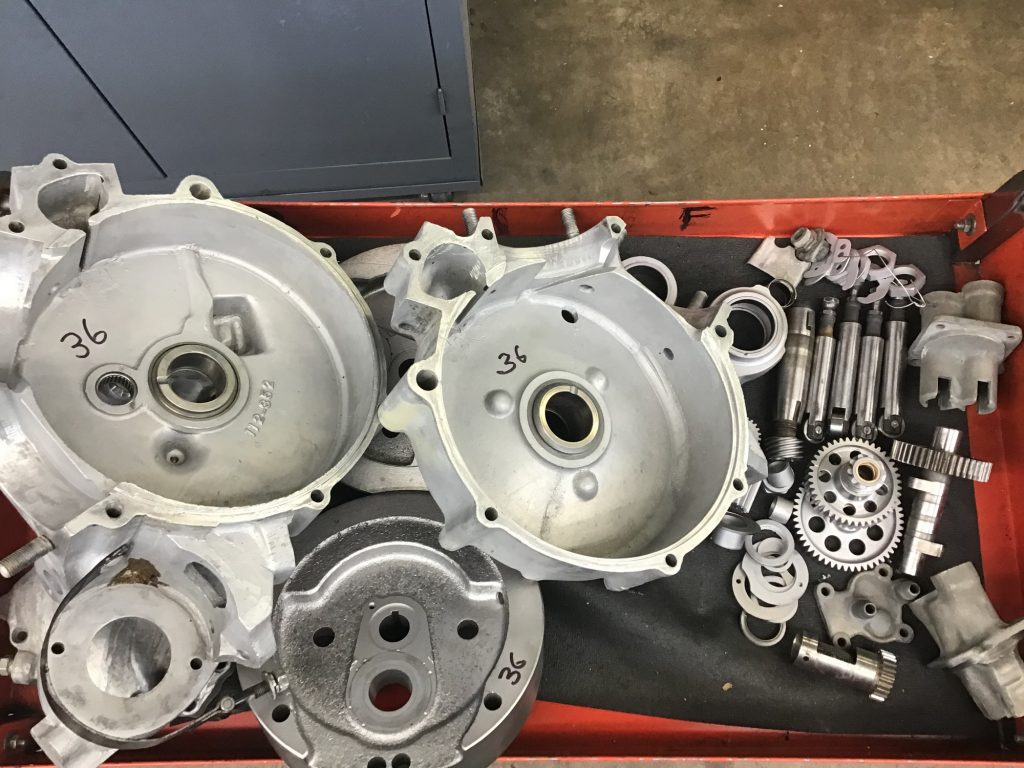
Has anyone ever run across this ‘oiling’ modification? To me it looks like the centrifugal force of the wheels is supposed to be collecting oil and spraying it out of the little holes on the edge of the flywheel.
But why would anyone ever want more oil in the cylinders? At this time in Harley’s history they were installing baffle plates to *reduce* the amount of oil getting into the cylinders.
So if anyone has a theory I’d love to hear it.

